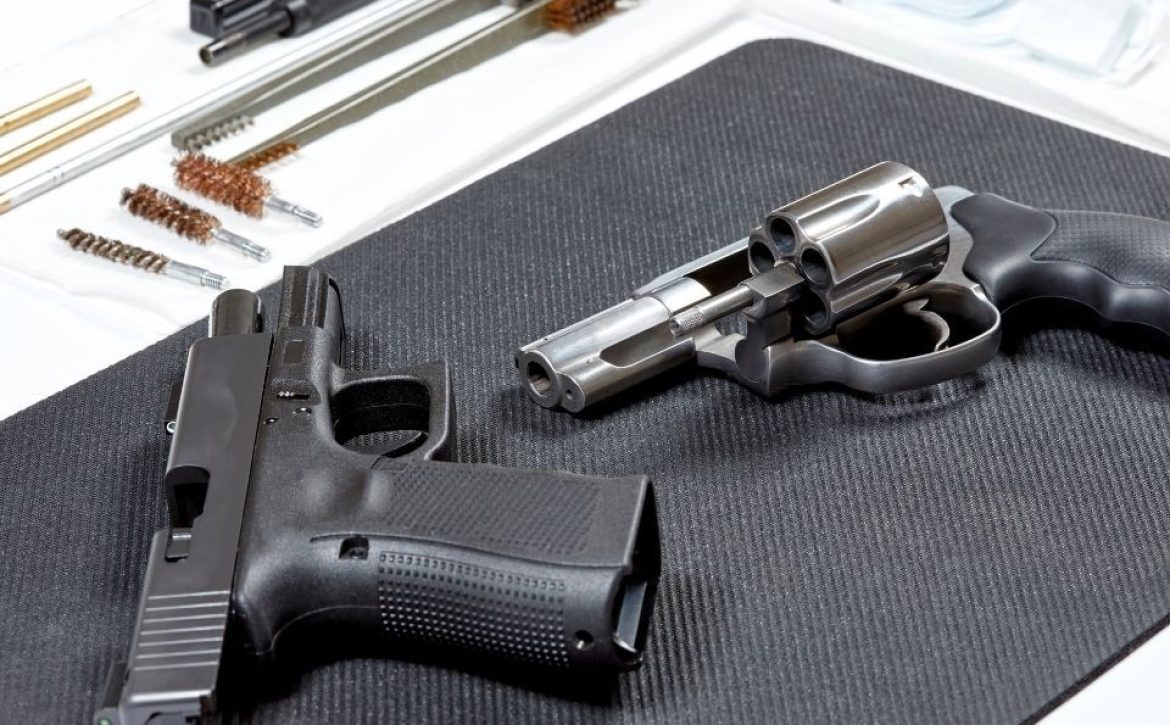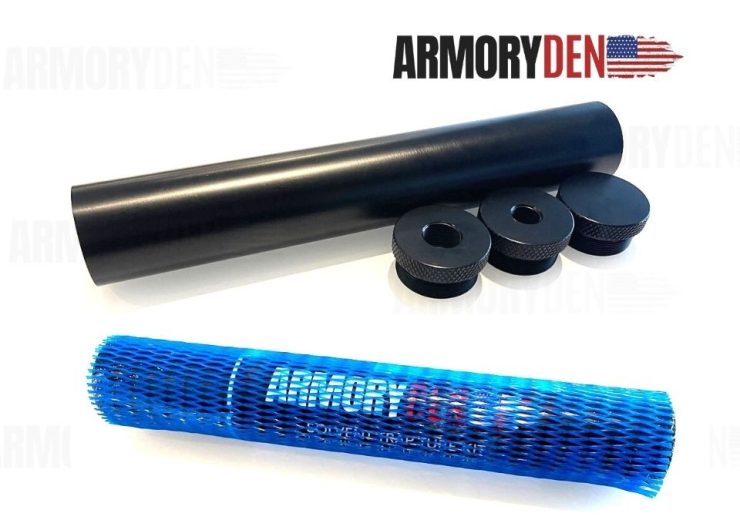What Is the General Composition of a Gun Cleaning Solution?
You have probably asked yourself which is the best firearm cleaning solution to use. If you seek answers from other firearm users, you can get different recommendations.
There are many products on the market, and some people have gone to the extent of creating homemade solutions. The cleaning solutions combine chemical substances to dissolve or loosen metallic and powder residue in firearm cylinders, barrels, and actions.
The chemicals may comprise several ingredients, including surfactants, N-butyl, ammonia, kerosene, and potassium, to name a few.
It is essential to understand the composition of your gun cleaning solvent for effective and safe cleaning.
Liquid-Based Cleaning Solutions
The main ingredients of petroleum-based solvents are kerosene, ethanol, ammonium hydroxide, amyl acetate, and oleic acid. Cleaning solvents like Hoppe’s No.9 Gun Bore Cleaner from Armory Den have similar petroleum and kerosene-based ingredients that give them ultra-cleaning effectiveness.
Other products may combine the kerosene-based ingredients with mineral spirits, transmission fluids, and acetone. Most firearm cleaning solutions, however, have kerosene as the primary solvent.
However, cross-checking the ingredients in the liquid gun cleaning solvent is vital so you know what is going into your barrel and the exterior parts of your firearm. You can find this information in the Safety Data Sheets (SDS) of the solvents.
Kerosene as a base ingredient works well in a firearm cleaning solvent as it doesn’t harm both the plastic and metal parts and leaves no residue. Mineral spirits will also not harm firearm parts and are perfect for removing cosmoline.
Gun cleaning solvents with ethanol evaporate quickly, displacing moisture on the firearm; they can also be used as degreasers. Note that the products strip away oils from your firearm, and it would be advisable to oil your weapon after cleaning with solvents.
Solutions with ammonium hydroxide effectively remove both carbon and copper residue from your firearm.
Some research on the contents of liquid gun cleaning solutions by reading the SDS will help you identify an effective cleaning product that will not damage your firearm’s finish. Many products like Hoppe’s No.9 are effective and gentle on your finishes.
Aerosol Cleaning Solutions
Aerosol-based firearm cleaning solvents’ composition usually includes heptane, acetone, methanol, carbon dioxide, toluene, and methanol.
Aerosol-based firearm cleaning products use a high-pressure spray to clean metal firearm surfaces by removing grease, carbon, oil, and dirt. They are known for their quick cleaning and fast drying, through a process that leaves no residue, giving a firearm a good finish.
Most of the ingredients in firearm cleaning aerosols are hazardous, especially in high concentrations. For instance, heptane is not only a fire hazard but can also affect your central nervous system.
Repeated and prolonged exposure to methanol can cause eye inflammation and harm your central nervous system, so it is used in low concentrations in firearm cleaning products.
Acetone is known for its excellent oil de-greasing and fingerprint removal properties. Toluene is also an effective solvent for cleaning firearms immediately after use. Acetone, toluene, heptane, and methanol do the tough cleaning job, whereas carbon dioxide plays a key role in propelling the contents of the cleaning products.
The products’ ingredients CAS numbers are listed to help you identify the chemicals used in the aerosol cleaners and their properties. The concentration of the ingredients is often expressed in ranges, and you can tell which chemicals have a higher concentration in the products.
Most aerosol firearm cleaners essentially have the same ingredients, just in different quantities and prices. When choosing the products, consider the materials of your firearm’s parts. For instance, acetone is known for melting away plastic.
In an aerosol firearm cleaner, a high acetone concentration is not recommended for polymer firearms to prevent damage. Pay attention to manufacturers’ alerts on the labels regarding the effects of the products on special firearm finishes.
Firearm Grease and Oils
Oiling your firearm should be as routine as cleaning it. After using cleaning solvents, you should wipe your firearm with a thin layer of oil as they usually strip off oil from the firearm. After lubrication, run a dry patch through your firearm to remove excess oils.
Firearm grease like the Hoppe’s Grease has a high viscosity, sticks to firearms’ metal parts longer, and is used on metal-to-metal components such as triggers and bolt carriers with low operational tolerance.
Firearm oils have lower viscosity with easy flow and are designed for use in components with close operational tolerance.
The main ingredients in firearm greases and oils are butene, dialkyl dithiocarbamate, and lithium hydroxide. The ingredients combined provide the best performance requirements for oil greases and oils. For instance, lithium-based greases have water resistance, stability, and high-temperature characteristics.
Are Firearm Cleaning Solutions Toxic?
You will come across statements like harmful if swallowed, avoid contact with skin, or highly flammable in the products’ Safety Data Sheets.
Most firearm cleaning solutions have harmful ingredients which can affect your nervous system, irritate your skin and eyes, and are highly flammable. Safety when using the products should be a priority.
Firearm cleaning using the solutions should be done in well-ventilated areas and away from flames. Users should also avoid contact with skin, inhalation, and exposure to the eyes; wear protective gear such as gloves made with chemical-resistant materials when cleaning your firearm.
The chemicals in the cleaning solutions are designed to dissolve the powder and metallic residue immediately after use or build up after being allowed to sit for an extended time.
Firearm cleaning products have multiple ingredients strategically picked to perform different tasks in the cleaning process. The chemicals have different properties making them suitable for effective dirt and residue removal.
There are plenty of products like Hoppe’s No.9 gun cleaning solvent. Most of the products have similar ingredients, which all work well.
Read the Safety Data Sheets and pay attention to warnings for vital information such as products that can damage a specific type of finish.
Disclaimer: Cleaning recommendations shown in this article are for information purposes only. It is the responsibility of the firearm owner to take precautionary safety steps prior to utilizing this writeup as a resource. Armory Den | Armory Den, Inc. accepts NO liability related to injury, death or other negative consequences sustained due to negligence or any other user related faults.






